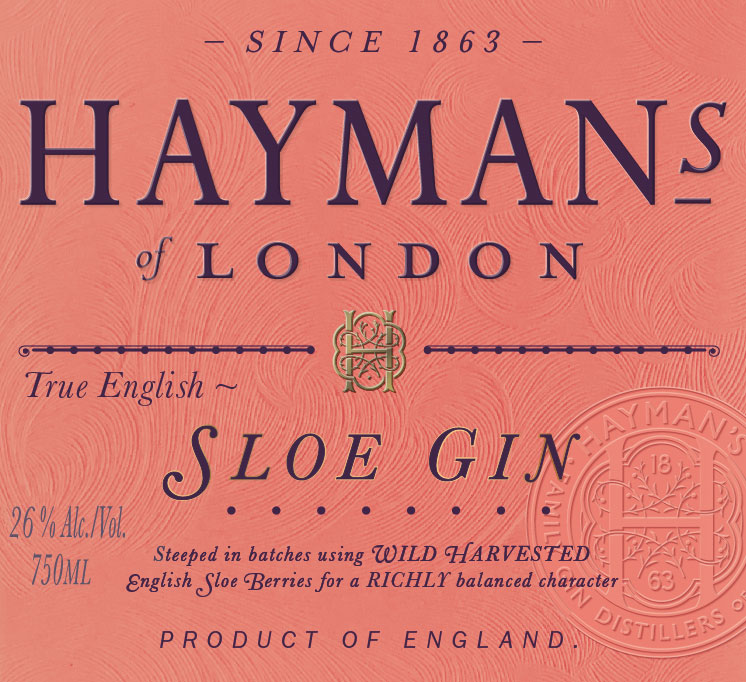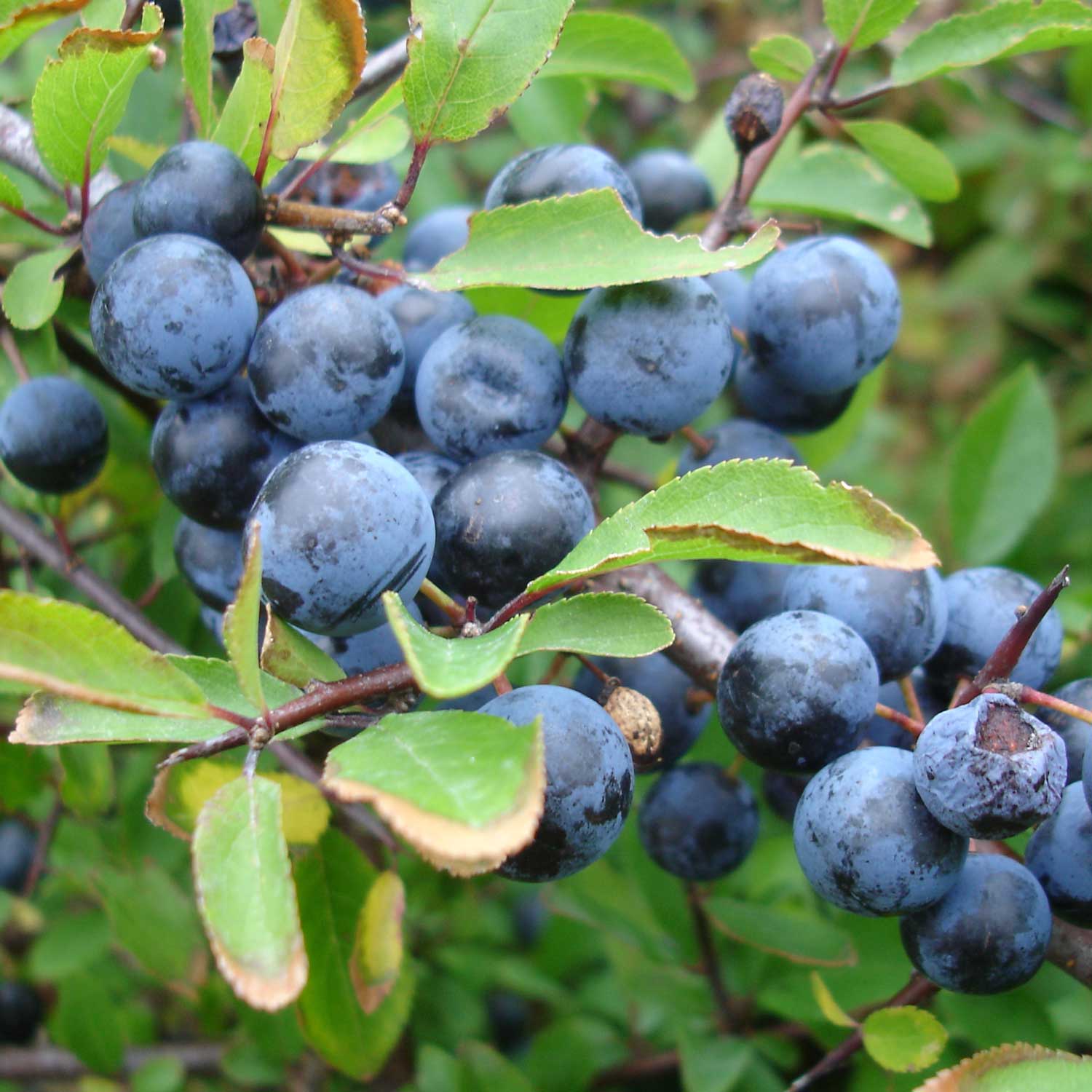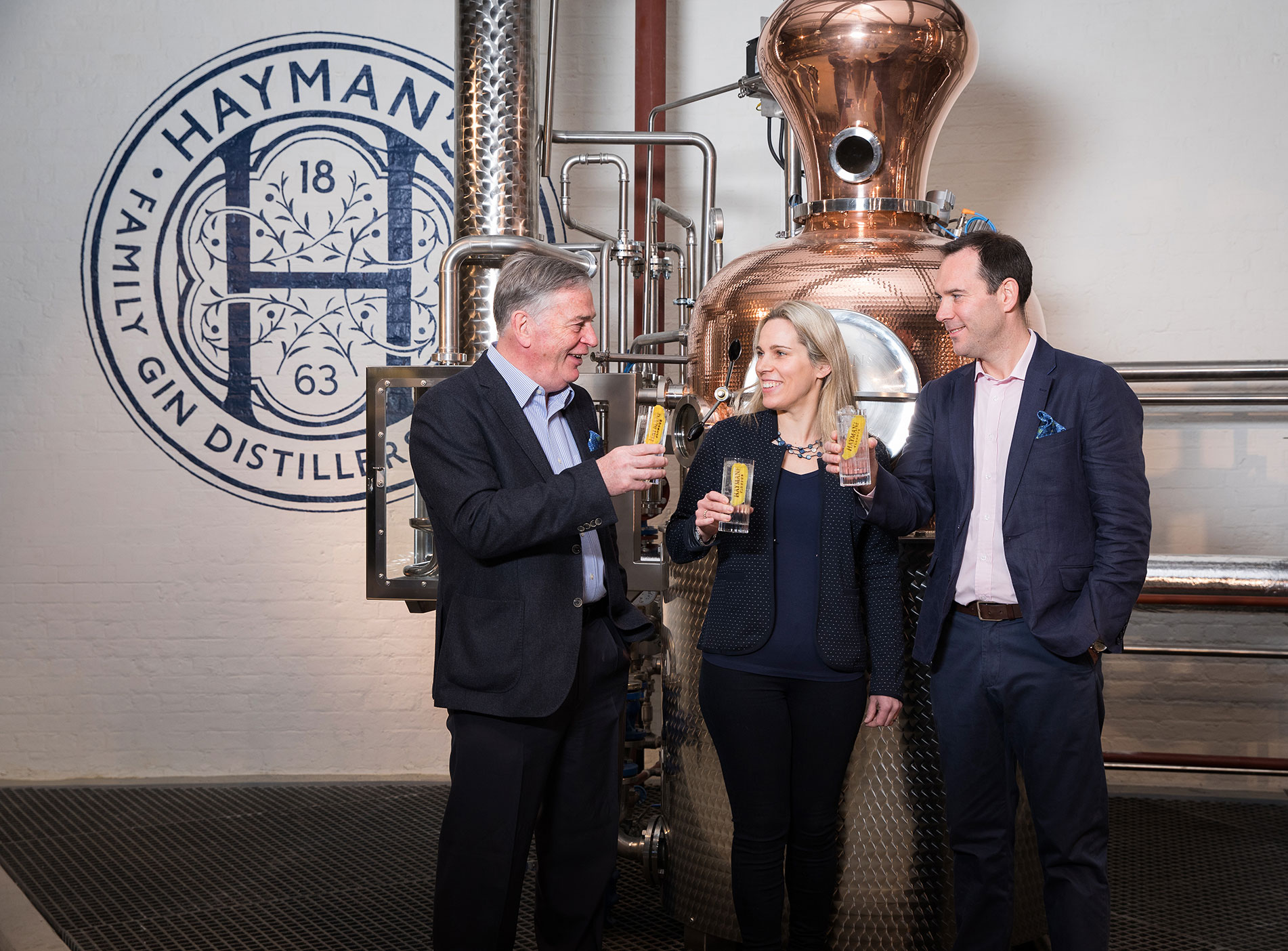Hayman’s Sloe Gin
- Traditional English liqueur from sloeberries of the Blackthorn tree
- Famously mixes with sparkling wine and lemon, or ginger beer and lime
- Bittersweet berry flavors; hints of cinnamon, clove and ginger
- Essential in classic cocktails such as the Blackthorn
- In England, a cornerstone to numerous winter holiday drinks
- Hayman family has made gin since 1863

|

|
A traditional English liqueur made by infusing gin with the sloe berries of the Blackthorn tree which grows throughout the British Isles. Hayman’s Sloe Gin is made from a family recipe dating back many generations. Wild English sloe berries are gently steeped for several months with Hayman’s London Dry Gin before blending with just a little natural sugar to create this rich liqueur. Hayman’s adds no additional colors, vanilla, or other flavors. To the taste it is a rich ruby with bittersweet berry flavors and hints of cinnamon, clove and ginger. Drink in classic cocktails, sparkling wine, or with soda in a traditional fizz.
The resurgence of classic bar ingredients has brought sloe gin back into the spotlight. For brunch, add lemon juice and sparkling wine to Hayman’s Sloe Gin in a flute. This effervescent cocktail complements savory dish like Eggs Benedict or bridges its brambly fruit flavors with sweeter dishes like berry-filled pancakes. Coast into happy hour with Hayman’s Sloe Gin, ginger beer and a squeeze of lime over ice. And when guests begin to grow hungry, a Blackthorn is a suitable mid-ABV classic.
(50-65ºF)
(room temp)
(55-59ºF)
About Hayman Distillers
 Base map data ©2017 GeoBasis-DE/BKG (©2009), Google
Base map data ©2017 GeoBasis-DE/BKG (©2009), GoogleAn original in their category, the Hayman family is the oldest gin-distilling family in London, having started their work in 1863. Company founder James Burrough was the great-great-grandfather of the current chairpersons, Miranda Hayman and James Hayman. Burrough was a true pioneer in the history of gin, innovating both process and profile. Not long after the Single Bottle Act of 1861, which allowed gin to be sold in bottles, Burrough set out to develop cleaner and more expressive profiles made possible with glass packaging. He employed a more expansive set of botanicals than his predecessors, and drew accolades as the first to employ citrus. The resulting profiles set a new standard that, for many drinks enthusiasts, remain benchmarks for traditional English gin.
From the earliest days, Burrough produced a variety of gin styles. There was a navy-strength gin that was procured by the Admiralty at the Royal Dock on the Thames. Highly prized was his Old Tom gin, the leading style of the Victorian era. A counterpoint to this was his ‘Black Cat’, a London Dry style. A variation on this London Dry was ‘Olde Chelsey’, named for the distillery’s location. Decades later, his company gained recognition overseas with a different London dry gin named to honor the palace guard. At the dawn of the cocktail revival in the early 2000s, the family once again drew accolades with the reintroduction of their Old Tom recipe.
All of Hayman’s historic gins maintain the same production methods and recipes from their inception over 150 years ago. The defining production methods of Hayman’s Gin include: use of three small copper-pot stills; 24-hour maceration of botanicals, for true concentration; and the use of 10 core classic botanicals in varying proportions depending upon style. As a group, Hayman’s Gins have the depth, balance, and rich juniper core to provide the ideal base for the complete canon of gin cocktails. Full details
About Gin/Gin Liqueur
Gin is a neutral spirit flavored with juniper and various botanicals, including coriander, angelica and lemon and orange peel. It is rooted in the 15th-century Dutch juniper spirit Genever, whose malt-forward character contrasts with descendant gins such as Old Tom (lightly sweetened, rounded) London dry (sharp, angular, dry), Plymouth (mild, flavorful), Navy (potent and intense) and New West/Modern (neo-classic to unique). Gin has long been used in Great Britain as the base for fruit, floral and herb liqueurs, giving rise to the warm-weather tradition of gin “cups.” Full details
RECIPES See all 17 recipes for this product 17 recipes available at https://alpenz.com/productrecipes-sloe_gin.html
Sloe Royale
Build in a flute:
1 oz Hayman’s Sloe Gin
4 oz chilled sparkling wine
Garnish with lemon peel.
Sloe Gin Fizz
Prepare a collins glass.
Add 1 oz club soda.
Combine in a shaker:
0.75 oz Hayman’s Sloe Gin
0.75 oz Hayman’s London Dry Gin
0.75 oz lemon juice
0.5 oz simple syrup (1:1)
1 egg white, optional
Dry shake.
Shake again with ice.
Strain into the prepared glass.
Garnish with a lemon twist (discard the peel).
Moll Cocktail
(Savoy Cocktail Book)
Stir with ice:
1 oz Hayman’s Sloe Gin
1 oz Dolin Dry Vermouth de Chambéry
1 dash orange bitters
Strain into a coupe.
Garnish with lemon peel.
Post Modern
(Tom Richter, New York City)
Prepare a coupe rinsed with absinthe.
Shake with ice:
1.5 oz Scotch whisky
1 oz Hayman’s Sloe Gin
0.5 oz lemon juice
0.25 oz honey syrup (2:1)
Double-strain into the prepared glass.
BA to Barcelona
Prepare a double rocks glass or goblet.
Build with ice:
2.5 oz Timbal Vermut de Reus Extra Dry
0.75 oz Hayman’s Sloe Gin
3 oz tonic water
Garnish with a lemon slice (float on top).
| SKU | Vintage | Region | Origin | Desc | Cepage | % Alc | Size/Pack | Finish | BTL Barcode | Cs Barcode | Cs Wgt |
|---|---|---|---|---|---|---|---|---|---|---|---|
| HZ 1210 | NV | England | GB | Gin Liqueur | 26.0% | 750/12 | T Cap | 5021692650330 | 5021692650347 | 16.00 kg |
Downloads:



